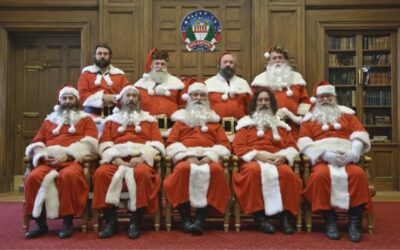This week’s top three summaries: R v Singh, 2025 ONCA 460: #omissions and #flashbacks, R v OW, 2025 ONSC 2922: #exclusive opportunity ID, R v Grant and Scott, 2025 ONSC 3513: s.9 #grounds for arrest
R v Singh, 2025 ONCA 460
[June 25, 2025] Reliability: Omissions to Police and Flashback Memories [Reasons by J. George J.A. with Janet Simmons and R. Pomerance J.A. concurring]
AUTHOR’S NOTE: Omissions and “Flashback” Memories in Sexual Assault Trials
This appellate judgment offers helpful guidance on assessing credibility and reliability in sexual offence cases:
-
Omissions as Inconsistencies:
Where a complainant omits significant details—such as the positions engaged in during a sexual assault—these omissions can amount to material inconsistencies that undermine the reliability of the account. The Court confirms that omissions aren’t always benign and may properly be treated as credibility concerns. -
“Flashback” Memories:
A complainant’s description of recalling key events through flashbacks can be assessed critically. It is open to trial judges to view such memory reconstruction as negatively affecting reliability, particularly where core events are retrieved in this manner.
These statements help frame a principled basis for challenging the reliability of testimony in cases where memory formation and narrative gaps are at issue.
R v OW, 2025 ONSC 2922
[June 2, 2025] Circumstantial Identification Evidence: Exclusive Opportunity [McVey J.]
AUTHOR’S NOTE: Circumstantial Identification Requires Exclusive Opportunity
When the Crown’s case for identification relies primarily on circumstantial evidence of opportunity, it must establish that the accused had the exclusive opportunity to commit the offence.
In this case, the accused was seen in the company of two individuals later convicted in relation to the murder—before and after the killing—including appearing with them in a celebratory rap video. However, this was not sufficient to identify him as one of the individuals captured on CCTV leaving the scene of the homicide.
The Court held that the evidence did not meet the high bar for identification by circumstantial evidence, and exclusive opportunity was not established.
Introduction
[1] O.W. is charged with first-degree murder and attempt murder, contrary to sections 235(1) and 239(1) of the Criminal Code. At the time of the alleged offences, O.W. was a young person within the meaning of the Youth Criminal Justice Act, S.C. 2002, c. 1. The Crown alleges that O.W., along with another youth, J.A., with the assistance of two adult accomplices, Noel Perez and Hantel Hersi, followed through on a premeditated plan to shoot and kill the deceased in the early morning hours of December 6, 2021. The shooting occurred at approximately 3:14am. Thedeceased was shot in the face and torso repeatedly at close range. He died before paramedics arrived. He was sixteen years old.
[2] Another young person, X.R., who was sleeping in the same room as the deceased, was shot multiple times as well but fortunately survived.
[3] J.A. has already pleaded guilty to first-degree murder and attempt murder for his role in the shooting. The defence does not contest the obvious fact that there were two shooters involved. The identity of the second shooter is the primary issue in this trial. A third individual, Mr. Perez, pleaded guilty to manslaughter on December 6, 2024, for his role in driving J.A. and the unknown shooter to and from the homicide. Mr. Hersi also pleaded guilty on December 6, 2024, to accessory after the fact to manslaughter for his part in assisting Mr. Perez after the shooting. To be clear, the defence not only admitted that Mr. Hersi, Mr. Perez, and J.A. pleaded guilty to the above offences, but admitted in these proceedings the pertinent facts upon which their pleas were based.
[4] The Crown’s principal position is that O.W. was the second shooter. In the alternative, the Crown maintains that O.W. counselled the murder from afar and is therefore guilty of murder pursuant to principles of party liability. The defence concedes that the unknown shooter committed first-degree murder and attempt murder.
[5] The Crown’s primary theory is as follows. The deceased, O.W. and J.A. were at one time good friends. They had a falling out some weeks or months prior to the shooting. The exact timing of the rift is unclear, so too is its basis. There is no evidence before me regarding the precise nature of the conflict, but little dispute that the friendship between them had come to an end in the weeks or months leading up to the shooting.
[6] In the late evening hours of December 5, 2021, J.A. and O.W. were engaged in an intense argument with the deceased on Instagram Live, a forum viewable by other Instagram users….
[8] When Mr. Perez and the others returned to 1485 Caldwell Ave. with the truck, J.A. joined them. Mr. Perez then drove J.A. and the second shooter, who the Crown argues was O.W., to the area where the deceased was staying. After circling the neighbourhood numerous times, Mr. Perez parked the truck near the deceased’s residence. J.A. and the second shooter exited the truck and approached the deceased’s home on foot. J.A. and the second shooter entered the home through the front door seemingly with the assistance of an unknown third party inside the residence.
[9] J.A. and the second shooter went upstairs, kicked open the deceased’s bedroom door, and shot both the deceased and X.R. numerous times as they lay in bed. J.A. and the second shooter immediately fled the scene and ran back to the truck. Mr. Perez drove the two shooters back to 1485 Caldwell Ave. where they are seen on video footage entering the apartment complex through the backdoor. Mr. Perez and Mr. Hersi drove to Orleans to return the truck and then drove back to 1485 Caldwell Ave. Within 20 minutes of returning, Mr. Perez, Mr. Hersi, and O.W. made a rap video on Snapchat celebrating the murder.
[10] Most, if not all, of the above facts in terms of how the murder unfolded are not contested. The issue in this case is the identity of the second shooter….
[11] The Crown’s case is entirely circumstantial. There is no direct evidence linking O.W. to the shooting. The Crown relies on the fact that O.W. was with J.A. the day before the shooting on December 5, 2021, at 1485 Caldwell Ave. while J.A. was in possession of a handgun; O.W. was present at the same apartment complex at 1485 Caldwell Ave. with Mr. Perez both before and after the shooting; O.W. was observed on Instagram Live threatening the deceased with a firearm approximately four and a half hours before the shooting; and O.W. is seen celebrating with Mr. Perez and Mr. Hersi in a rap video made approximately two and a half hours after the shooting in the same apartment at 1485 Caldwell Ave. The Crown asserts that, when considered collectively, the above facts support no reasonable inference other than that O.W. was the second shooter.
[12] Effectively, the Crown rests its case on four main pillars: means, opportunity, motive, and post-offence celebratory conduct. I will address each in turn, though I appreciate that the evidentiary record must be viewed as a whole when determining whether the Crown has proven O.W.’s guilt beyond a reasonable doubt. The evidence cannot be assessed in a piecemeal fashion.
[14] There is no question that O.W. had both the means and the opportunity to commit the murder. Videos were tendered into evidence that show O.W. at 1485 Caldwell Ave. with Mr. Perez, Mr. Hersi, and J.A. both before and shortly after the shooting….
….Though not formally admitted, the defence did not seriously challenge that O.W. owned the phone on which the videos were found.
[18] O.W. is again depicted on video footage taken by cameras installed at 1485 Caldwell Ave. at 9:17pm on December 5, 2021. O.W. is seen leaving the building via the back entrance and returning not long after. Once again, though O.W.’s face is not visible in the footage, I am satisfied that it depicts O.W. because he is wearing the same clothing as described above. The video footage establishes that O.W. is still at the apartment complex heading into the late evening hours of December 5, 2021.
[19] O.W. is also seen at the same apartment at 1485 Caldwell Ave. after the shooting and with the individuals now confirmed to have been involved, J.A., Mr. Perez, and Mr. Hersi
[22] I have more to say on the celebratory nature of the video below when I discuss what it may add to the Crown’s case in terms of identifying O.W. as the second shooter. But, at minimum, the video is another piece of evidence demonstrating that O.W. was with those involved in the murder at the 1485 Caldwell Ave. apartment both before and shortly after the shooting. Further, it is another piece of evidence confirming that O.W. was in the same apartment complex from where the second shooter exited before the shooting and returned after the shooting.
[23] The evidentiary record before me clearly establishes that O.W. had both the means and opportunity to commit the murder and had a temporally close association with the other individuals known to be involved. With that said, the Crown fairly concedes that O.W. did not have exclusive opportunity. Put another way, there were other individuals inside the 1485 Caldwell Ave. apartment both before and after the shooting who were not involved in the deadly violence. However, the Crown still maintains, rightfully, that O.W.’s presence in the apartment and his association with J.A., Mr. Perez, and Mr. Hersi remains a piece of circumstantial evidence to be considered alongside the evidence as a whole.[Emphasis by PJM]
[26] At 11:50pm, Mr. Perez, Mr. Hersi, and a third male are seen via video footage leaving the apartment complex at 1485 Caldwell Ave. via the front lobby to go pick up the truck in Orleans. I am easily satisfied that the third male seen in the video footage leaving the apartment complex is the second shooter….
[27] The parties part ways, however, on whether this individual is O.W. Both agree that the quality of the video footage in the lobby and vestibule of 1485 Caldwell Ave. does not permit a Nikolovski identification….
[28]….The quality of the video footage from 1485 Caldwell Ave is simply too low to reveal anything reliable about the facial features of the second shooter.
[29]….the facial features of the third male as depicted in the footage do not render it more or less likely that O.W. was the second shooter.
[30] In addition, O.W. is not seen wearing any of the clothing worn by the second shooter in the videos taken of him both before and after the homicide, with one potential caveat that I discuss below regarding O.W.’s scarf. However, I find that the lack of connection between O.W. and the second shooter’s clothing does not undermine the Crown’s case. As a matter of common sense, I have no difficulty accepting that an individual planning to commit murder would change into darker, unrecognizable clothing, and then change back into their original clothing before taking numerous videos of themselves, with some being made available on social media.
[31]….I have watched the video footage repeatedly and at various speeds. In my view, the exact nature of the item covering the second shooter’s face is indiscernible. It could be the scarf. It could easily not be. I cannot tell with any degree of confidence.
[33] In summary, I find that the video footage of the second shooter leaving the apartment complex is neutral on the issue of identification other than establishing opportunity, i.e., that the second shooter left from and returned to the same apartment complex where O.W. was present both before and after the shooting.
Celebratory Video
[34] As noted above, at 6:09am on December 6, 2021, approximately three hours after the shooting, Mr. Perez, Mr. Hersi, O.W., and a fourth individual, “Shadow,” were depicted in a Snapchat rap video. Mr. Perez made the video within 20 minutes of arriving back at the 1485 Caldwell Ave. apartment. The Crown argues that O.W.’s participation in this video is further circumstantial evidence of his involvement in the homicide. I agree.
[37] I appreciate, however, that the video depicts a third party who was not involved in the murder. Shadow’s presence in the video drives home the point that O.W.’s participation is far from proof positive that he was the second shooter. At least one other person in the apartment who was not implicated in the murder also glorified and legitimized the violence. Nonetheless, O.W.’s apparent satisfaction following the killing remains relevant and serves as an additional piece in the Crown’s circumstantial case.
Motive and Animus
[38] This leads me to the related concepts of motive and animus, which together form the lynchpin and driving force of the Crown’s case. The Crown maintains that O.W. exhibited a fatal malice towards the deceased approximately four hours before the shooting, and that fact, when considered alongside the evidence of means, opportunity, and post-killing celebration, establishes O.W.’s guilt beyond a reasonable doubt. The Crown concedes that without the evidence regarding motive and animus, the remaining evidence in this case could not sustain a conviction. This was an imminently reasonable concession and one consistent with the Crown’s quasi-judicial role.
[39] The evidence of O.W.’s purported animus towards the deceased stems primarily from the evidence of Rebecca Guindon and to a much lesser extent the evidence of P.R. Ms. Guindon testified that while watching Instagram Live at approximately 11:00pm on December 5, 2021, she saw and heard O.W. threaten to harm the deceased while holding a handgun. The Crown contends that Ms. Guindon’s evidence establishes that O.W. was the “principal agitator” in the dispute, which renders his involvement as the second shooter the only reasonably available inference on the whole of the evidence
[40] For reasons given below, I find Ms. Guindon’s evidence unreliable. Overall, she was loose with her language, careless with details, and exhibited to some degree a bias against O.W. Though I appreciate that one would naturally hold a bias against the person they feel is responsible for taking the life of a loved one, and that this should not necessarily undermine their reliability or credibility as a witness, I am mindful of it in this case given other problems with Ms. Guindon’s evidence and memory. As a result, I approach her evidence with caution….
[41] Second, Ms. Guindon repeatedly made conclusory statements only for me to later discover that there was either little or no basis for them. For example, she testified that the Instagram Live argument was over “popularity and music.” This was an important question because the answer impacted the degree to which O.W. may have been driven to harm the deceased. But when asked moments later whether she was able to ascertain the subject matter of the argument from what the males were saying, she answered “no.” Therefore, Ms. Guindon was either conveying information about the argument that she received from someone else without so stating, or she was relying on unstated presumptions or assumptions.
[42] Further, when asked what she heard O.W. say on Instagram Live, she answered that O.W. said “he was going to shoot [the deceased]” and that “pretty much he would end [the deceased].” When asked if she could recall the specific words, she stated, “yes” but then was unable to recall them. The Crown initially sought to refresh Ms. Guindon’s memory but then abandoned that attempt. In cross-examination, Ms. Guindon, though in a moment of frustration, agreed that she may not have heard O.W. specifically threaten to shoot the deceased, and that she may have subconsciously added that detail to her narrative after learning that the deceased had been shot….
[43]….The problem is that Ms. Guindon did not disclose that she was paraphrasing or expressing her own interpretation of the words she heard or the conduct she observed. She was asked very specifically what she heard O.W. say to the deceased. Her response exemplifies either carelessness on her part regarding critical details of what happened or the susceptibility of her memory to tainting by other events that transpired after the shooting.
[44] The potential tainting of her memory is of particular concern because within hours of watching the Instagram Live session and before speaking with police, Ms. Guindon came into possession of an unrelated video depicting O.W. waving around what could have been a firearm. In her statement to the police, she describes O.W. as having possessed a firearm during the Instagram Live session. At the time of her interview, Ms. Guindon already knew that the deceased had been shot and she had spoken with at least three individuals regarding the shooting before she spoke with the police. Further, she conceded in cross examination that what she learned about the shooting after-the-fact may have influenced her memory of what O.W. said to the deceased during the Instagram Live session. This raises live concerns about whether her memory of O.W. possessing a firearm during the Instagram live session was similarly compromised by her having seen a different video that very morning of O.W. possessing a firearm.
[45]….The video was provided to the police by Ms. Guindon during her interview on December 6, 2021. The discreditable conduct application proceeded by way of a blended voir dire. The Crown asked Ms. Guindon when it was that she first received the video. She answered that she received it the evening befor the deceased’s death and that she gave it to the police after the shooting. The Crown then refreshed her memory with the statement she provided to the police on December 6, 2021. Ms. Guindon then testified that she received the video a week before the shooting. She then immediately contradicted herself and said that she received it on the night of the shooting and possessed it for about an hour before she gave it to the police.
[46] The Crown cross-examined Ms. Guindon pursuant to section 9(2) of the Canada Evidence Act. She agreed once again that she received the video a week before the shooting. However, for the second time she went on to contradict herself and state that she received the video right after she found out that the deceased had been killed.
[48] Fourth, Ms. Guindon contradicted herself on other occasions as well. She testified in crossexamination that she only followed the deceased on social media and did not follow the other males in the group. Later, in cross-examination, she stated that she followed many of the males on Instagram at the time. She offered no logical explanation for this obvious contradiction….
[51] Finally, Ms. Guindon appeared frustrated and exasperated at various times during what I found to be a relatively short, respectful, and fair cross examination. I appreciate that testifying can be a difficult experience for many, particularly in a serious case where emotions are running high. Just the same, I find that Ms. Guindon was not a focused witness who understood the seriousness of her role or the evidence she had to give. She answered questions quickly with little reflection and at times with evident irritation. To be clear, her manner of giving evidence is not dispositive of her credibility or reliability. But it is one additional factor that gives me pause among the other issues in her evidence.
[52] In summary, Ms. Guindon did not exhibit the hallmarks of a dependable witness. While none of the individual shortcomings in her evidence are, on their own, necessarily fatal to her reliability or credibility, their cumulative effect makes it, in my view, unsafe to rely on her account of O.W.’s conduct on Instagram Live without confirmatory evidence. This leads me to the evidence of X.R. and P.R. in relation to that issue.
[56] Notwithstanding the different narratives of P.R., Ms. Guindon and X.R. in relation to what occurred on Instagram Live, I accept that a heated exchange took place on Instagram Live between the deceased and O.W. and J.A. This is a commonality between the evidence of P.R. and Ms. Guindon, who had no opportunity to collude before speaking with the police. Further, the evidence of an Instagram Live argument having taken place is largely supported by J.A.’s later participation in the shooting. I find that X.R. spoke with the deceased before the argument with J.A. and O.W. unfolded which explains why he did not observe it.
[57] The difficulty for the Crown, however, is that neither X.R. nor P.R.’s evidence confirms or corroborates the evidence of Ms. Guindon in relation to O.W.’s conduct on Instagram Live; specifically, that he threatened the deceased with a firearm, or for that matter that he threatened him at all. Neither X.R. nor P.R. overheard O.W. threaten the deceased.
[60] As stated, I am willing to accept that there was an argument between J.A., O.W., and the deceased on Instagram Live that was heated in nature. But in terms of what exactly was said and by whom, I am unsure. Similarly, I have no reliable evidence before me regarding what the males were arguing about. Ms. Guindon testified that they were arguing over “music and popularity,” but she testified that her belief was not based on the words spoken. Without knowing more about the nature of the conflict, in my view, little can be safely inferred from the “why” regarding the “who.” I have no idea what the argument was about or who was primarily or exclusively involved. None of the witnesses watched the entire Instagram Live exchange. I cannot determine with any degree of confidence who may have been primarily motivated to harm the deceased.
Totality of the Evidence
[61] Given that the Crown relies exclusively on circumstantial evidence to prove identification, I must be satisfied beyond a reasonable doubt that the only rational inference that can be drawn from the evidence or lack thereof is that O.W. was the second shooter: R v Villaroman, [2016] 1 S.C.R. 1000, at para. 30. Plausible counternarratives do not have to arise from proven facts but may stem from a lack of evidence as a reasonable doubt is one logically connected to the evidence or absence thereof: Villaroman, at paras. 28, 35; R v Lifchus, [1997] 3 S.C.R. 320, at para. 36.
[63] Though motive is not an essential element of the offence, it is a critical piece of the puzzle in the circumstances of this case. The Crown’s theory hinges entirely on a finding that O.W. was the “principal agitator.” I simply cannot make that finding on this evidentiary record given that I do not accept Ms. Guindon’s evidence on this point.
[66] In the end, I am satisfied that O.W. and J.A. were both upset with the deceased. That much is clear. Evidently, J.A. harbored a lethal animus towards the deceased. I do not know why. I do not know who else at 1485 Caldwell Ave. may have been upset with the deceased. I do not know who else may have participated on the Instagram Live session. No witness watched the entire exchange. I know at least one other person was willing to assist the shooters from inside the home where the deceased was staying. I do not know why. The gaps in the evidence significantly undermine what circumstantial inferences can be drawn regarding the identity of the second shooter. On the evidence I am willing to accept, J.A. could just as easily have been the driving force behind the shooting. In those circumstances, I cannot possibly be satisfied beyond a reasonable doubt that O.W. was the only person at 1485 Caldwell Ave. that would have been willing to assist him.
[68] As noted by the Court in Villaroman, at para. 38, the line between a “plausible theory” and speculation is not always easy to draw. The ultimate question is “whether the circumstantial evidence, viewed logically and in light of human experience, is reasonably capable of supporting an inference other than that the accused is guilty”: Villaroman, at para. 38. Here, that question must be answered in the affirmative given the uncertainty regarding O.W.’s role in the Instagram Live argument; the unknown strength of any animus he may have harbored against the deceased; and the potential involvement of others. While O.W. had the opportunity to commit the offence given his proven presence at 1485 Caldwell Ave. at the relevant time, so, too, did others. O.W. shamelessly celebrated the murder after-the-fact. So, too, did others who were not involved. What sets O.W. apart from those individuals is his supposed conduct on Instagram Live. However, I am not satisfied that he threatened the deceased with a firearm, or that he threatened him at all. Without that finding, particularly given the many gaps in the evidence, I cannot be satisfied beyond a reasonable doubt that O.W. was the second shooter.
Party Liability
[74] I am satisfied that O.W. played some role in the Instagram Live dispute. Beyond that, I know nothing about what happened on Instagram Live, why it happened, who else may have participated, or why the relationship between O.W. and the deceased originally broke down. I cannot find from the little I know regarding the conflict that the only reasonable inference to be derived from the evidence or lack thereof isthat O.W. counselled the homicide from 1485 Caldwell Ave.
Conclusion
[75] Without question, the orchestrated violence inflicted on the deceased and X.R. is as tragic as it is infuriating. The facts of this case expose a harsh and chilling reality: that there are those among us who would so ruthlessly and heartlessly take a young life, then openly revel in a perverted sense of triumph. Indeed, the rap video made shortly after the murder reflects a depth of inhumanity and depravity that defies my comprehension. J.A. and the second shooter shot an unsuspecting, unarmed, and defenseless young man as he lay in his bed. That constitutes nothing but a shameful, evil act fueled by profound cowardice.
[76] But the standard of proof beyond a reasonable doubt lies as a safeguard against wrongful convictions and must never yield to anger, sadness, or frustration. Decisions about guilt or innocence must be based solely on evidence and reason—not on emotional reactions to senseless violence. If people come to believe that convictions can be secured on insufficient evidence, their trust in the justice system’s integrity and fairness will erode.
[77] My sole responsibility in this proceeding is to determine whether the evidence presented by the Crown meets the high standard of proof required of it. I am not satisfied that it does for the reasons given.
[78] I find O.W. not guilty of both counts.






